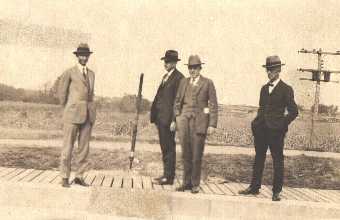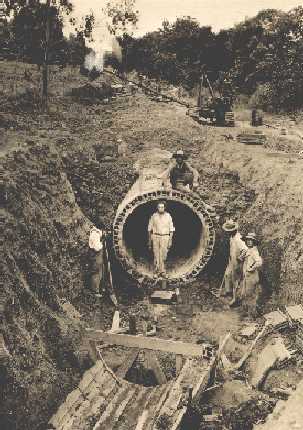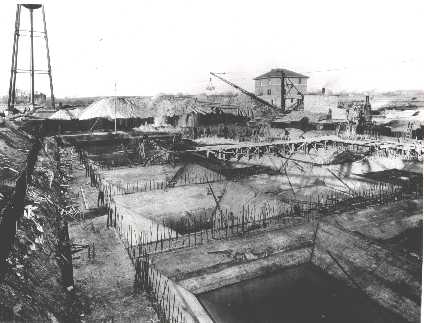Protecting Decatur’s Heritage Today
Decatur, IL was a hub of industry in the early 1900’s – a status it retains to this day. But during the first two decades of this century, Decatur’s continuing growth in population and in the developing of industries created a need to protect Lake Decatur, the city’s water supply, and the Sangamon River from residential and industrial pollution.
Today, Decatur’s commitment to protect the environment and accommodate growth is stronger than ever. The Sanitary District of Decatur (SDD) demonstrates that commitment with the completion of its Wastewater Facilities Improvement and Expansion Program, the largest public construction project ever undertaken in Macon County.
Seven years in the making, SDD’s expanded facilities include combined sewer overflow treatment facilities, additional pump stations, interceptor and force-main pipelines, sludge handling facilities, and an expanded and modernized wastewater treatment plant. SDD’s dry weather treatment capacity has been increased from 27 million gallons per day (MGD) to 41 MGD. West weather flow capacity for full secondary treatment has been increased from 50 MGD, to 125 MGD. The improvements promise to meet the needs of Decatur’s area residents and industries well into the 21st Century.
Imhoff Tanks
Forming the First Illinois Sanitary District
When the Sanitary District of Decatur formed on Oct. 11, 1917, it was the first such district to organize under the Sanitary District and Sewage Disposal Act of 1917.
Original District boundaries included all of the City of Decatur, Decatur Township, portions of South Wheatland and Long Creek Townships, and contained 33 square miles. As adjoining areas have developed and required service, the District has gradually grown until today, it serves an area of 47 square miles.
Construction of the first treatment facilities comprised one small sewage pumping station and 3.5 miles of intercepting sewers extending along the Sangamon River. These sewers collected sewage that had been going directly into the river, and conveyed it to the wastewater treatment plant. Completed in 1924, the original treatment plant consisted of screens, grit chambers, Imhoff tanks, sludge drying beds, and trickling filters.
Pioneering Treatment Technologies
During its earliest days of operation, a chemist named Dr. William D. Hatfield, became the first Superintendent of the Sanitary District. Dr. Hatfield pioneered innovative treatment methods using the Decatur facility as his proving ground, which resulted in the development of new and more efficient treatment plants. He later became a recognized leader in the advancement of wastewater treatment processes.
Today, the Water Pollution Control Federation, an international non-profit technical and educational organization devoted to water quality and pollution control, has adopted the William D. Hatfield Award to distinguish operators of wastewater treatment plants for outstanding performance and professionalism.

Dr. Karl Imhoff & "The Boys"

Dr. William D. Hatfield


